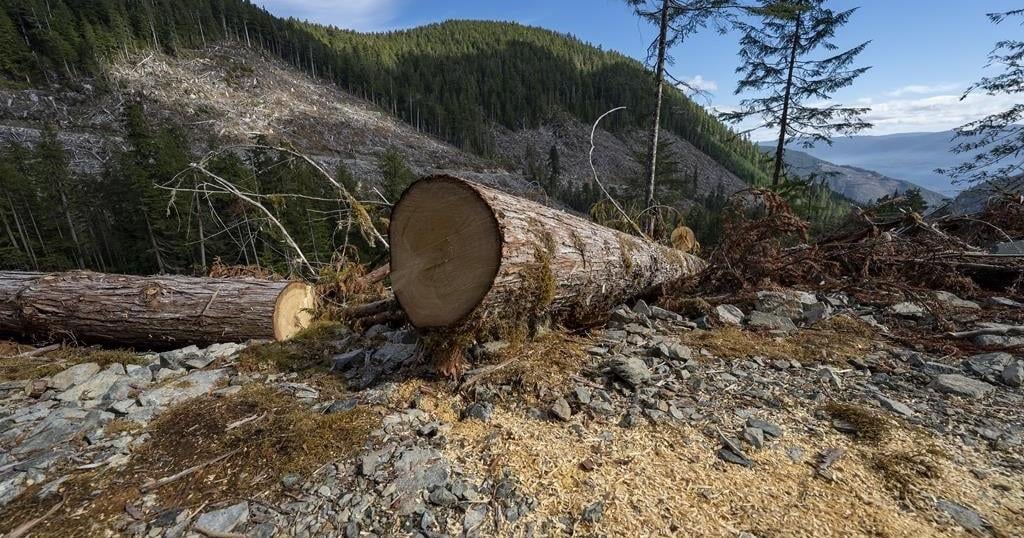VICTORIA – British Columbia’s forests watchdog says a complaint about “excessive” logging has led to a call for the province to improve how it manages watersheds.
The Forest Practices Board says it looked at harvesting in the Kettle River watershed in southeastern B.C. between 2016 and 2021, finding 58 per cent of 169 large cut blocks were located in “sub-watersheds” later determined to be “at risk.”
A statement from the board says it found five of seven forest companies did not conduct watershed assessments during that period, nor did they have to.
Board chair Keith Atkinson says the reviews are vital for managing land use and hydrology, but B.C. does not require logging companies to consider watershed conditions in their plans, except in areas that supply drinking water to communities.
The board says it found the ministry had assessed harvesting in the area, identifying “shortcomings” and prompting improvements by the forest companies.
But the report says investigators found a lack of government monitoring in the watershed that spans more than 8,000 square kilometres east of Kelowna.
“The investigation found that government paid attention to licensees’ activities and conducted assessments of licensees’ activities in the watershed,” it says.
“However, (the province) neither systematically monitored their activities nor provided clear guidance on managing cumulative effects aimed at protecting the watershed’s health.”
The ministry and professional associations have since developed initiatives providing information and tools to address cumulative effects, the board says.
“Looking forward, the board encourages ministry staff and licensees to use the current information and tools available to improve watershed management,” Atkinson says in the statement issued Tuesday.
The report notes the investigation did not determine whether harvesting large cut blocks had negatively affected hydrology.
But it found that companies were harvesting large areas in at-risk watersheds, which may elevate the risk of hydrological impacts, the report says.
The board’s investigation began in March 2021, when the watchdog says it received a complaint from a member of the public.
The complainant was “concerned the scale of clear-cut harvesting in the watershed had exceeded acceptable levels, leading to changes in seasonal water flows and increasing the risk of floods,” the board says in its statement issued Tuesday.
The probe also found harvesting 55 of the cut blocks focused on imitating natural disturbance patterns, which led to the logging of “green timber,” the board says.
Left standing, Atkinson says the timber can help guard against logging impacts.
“This is especially important if a watershed’s health is already at risk,” he says.
This report by The Canadian Press was first published Sept. 17, 2024.

























